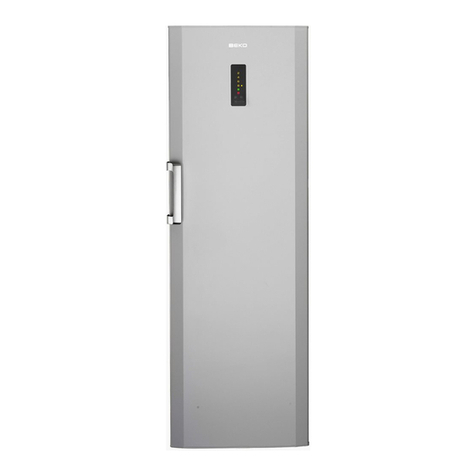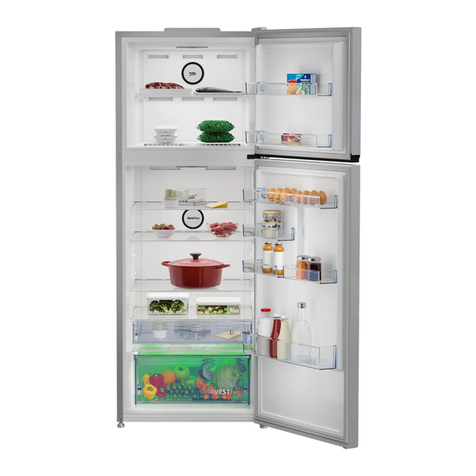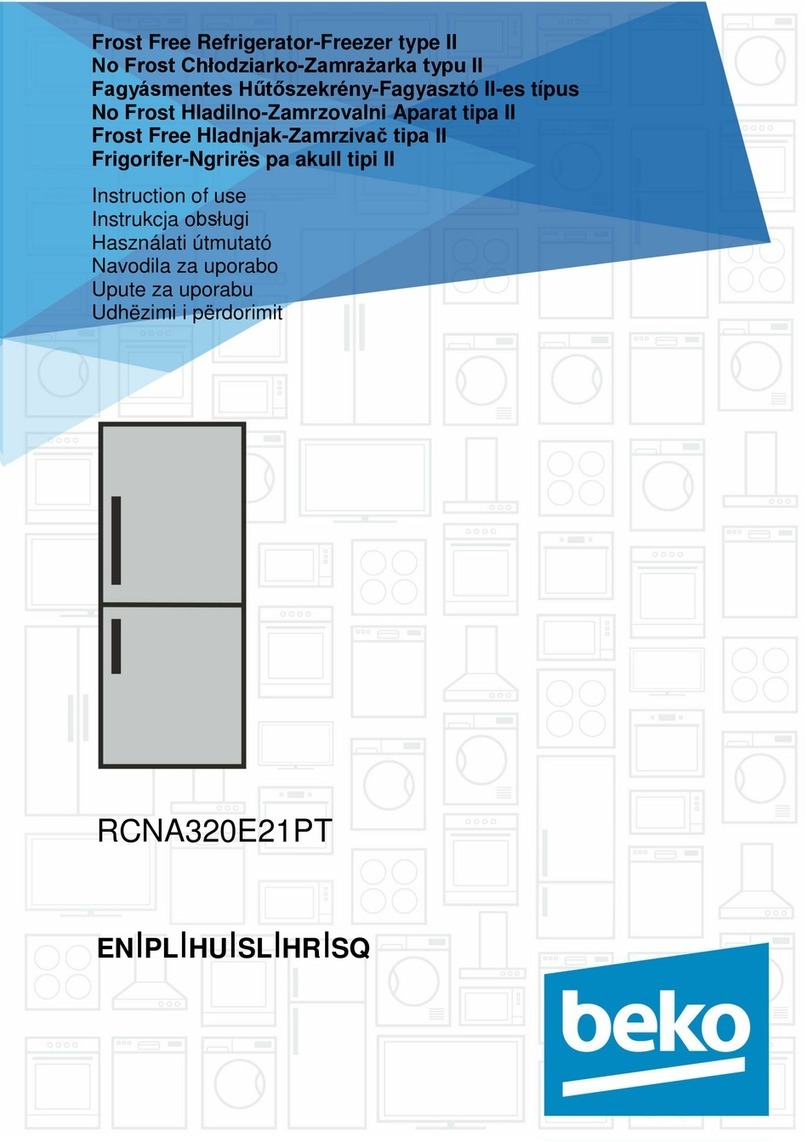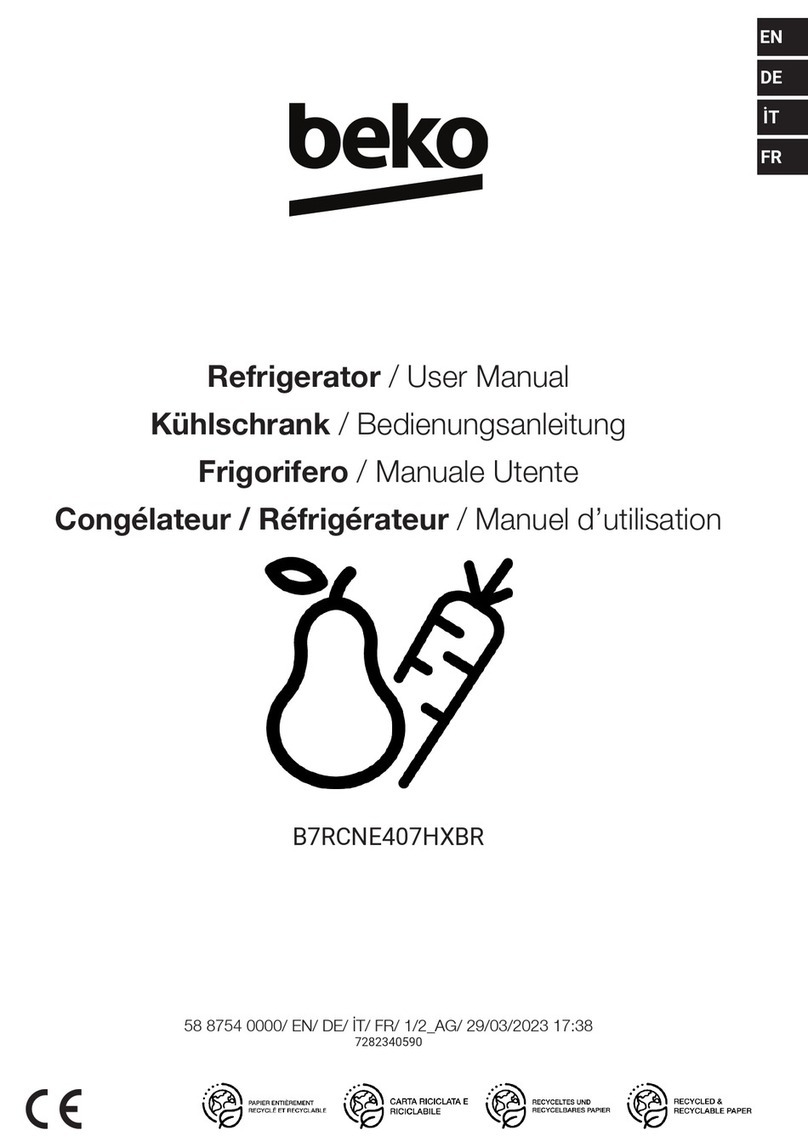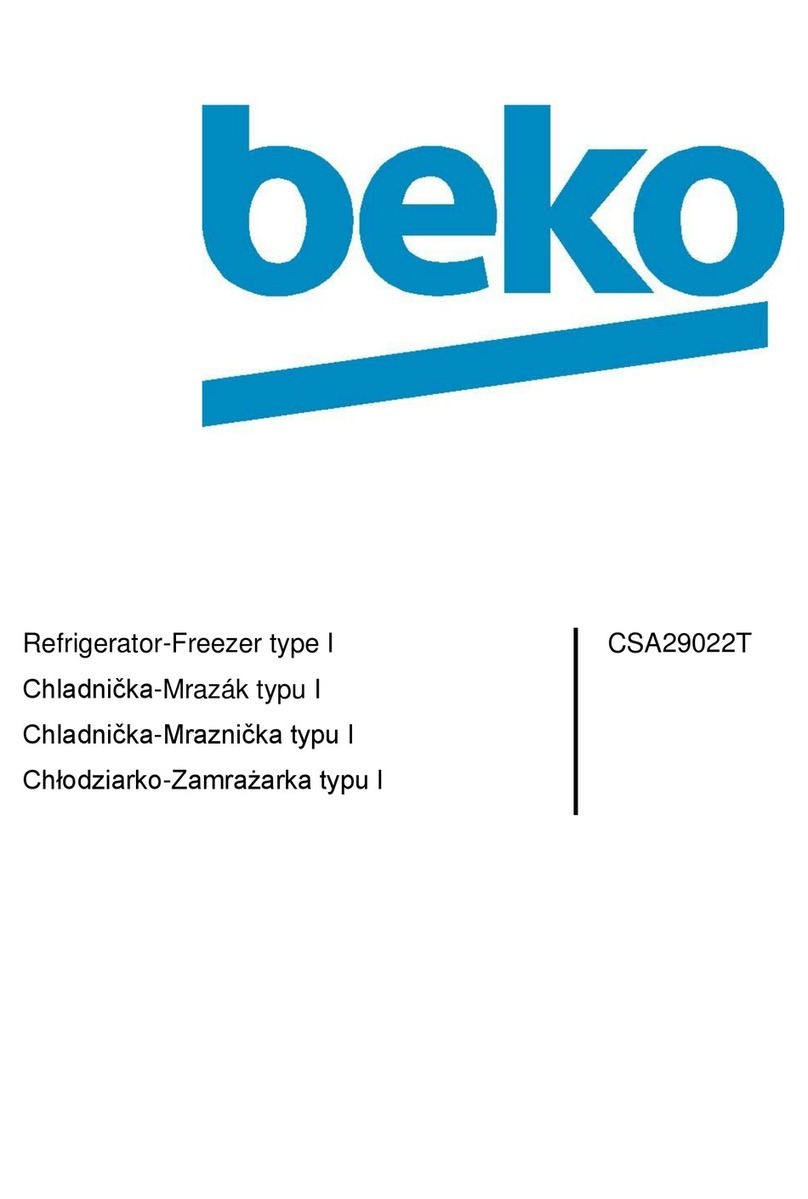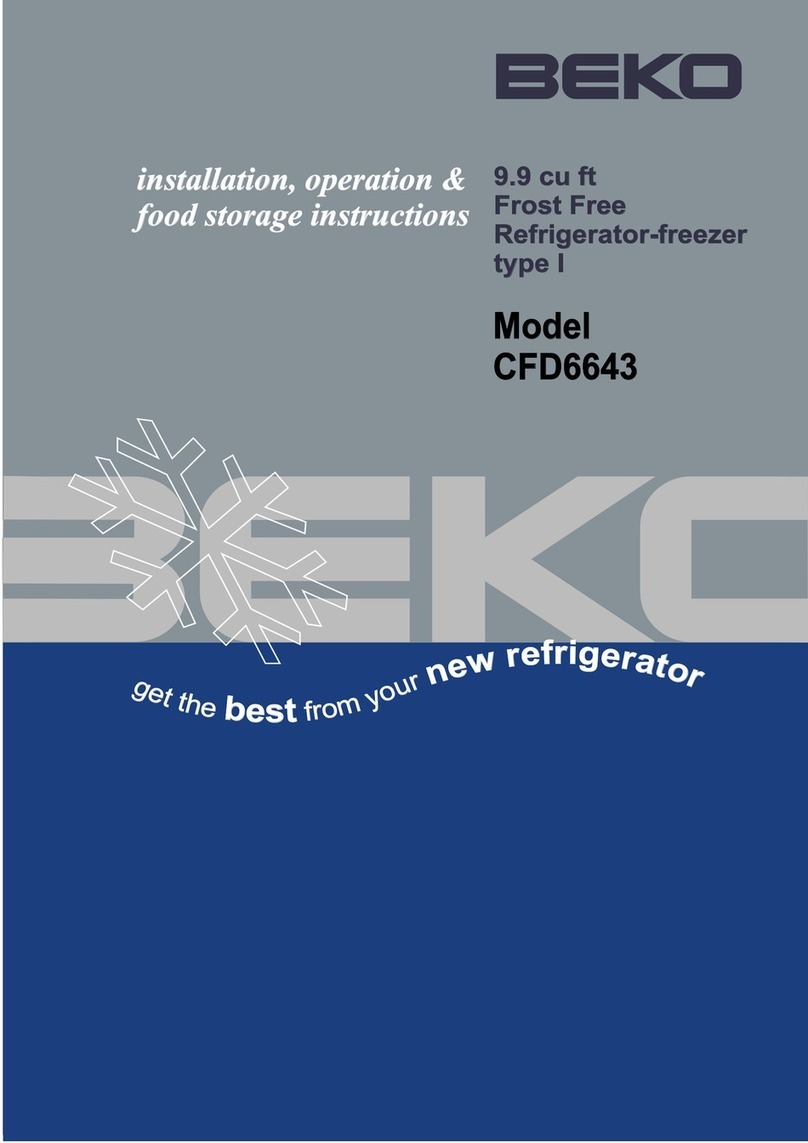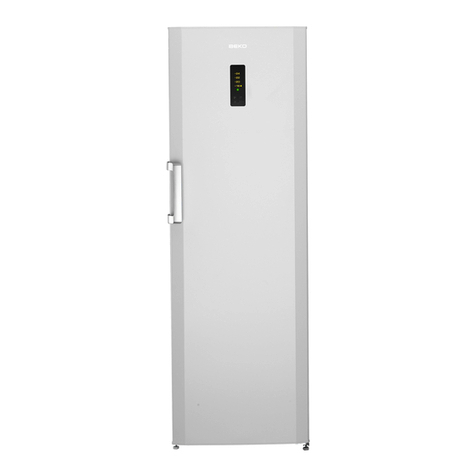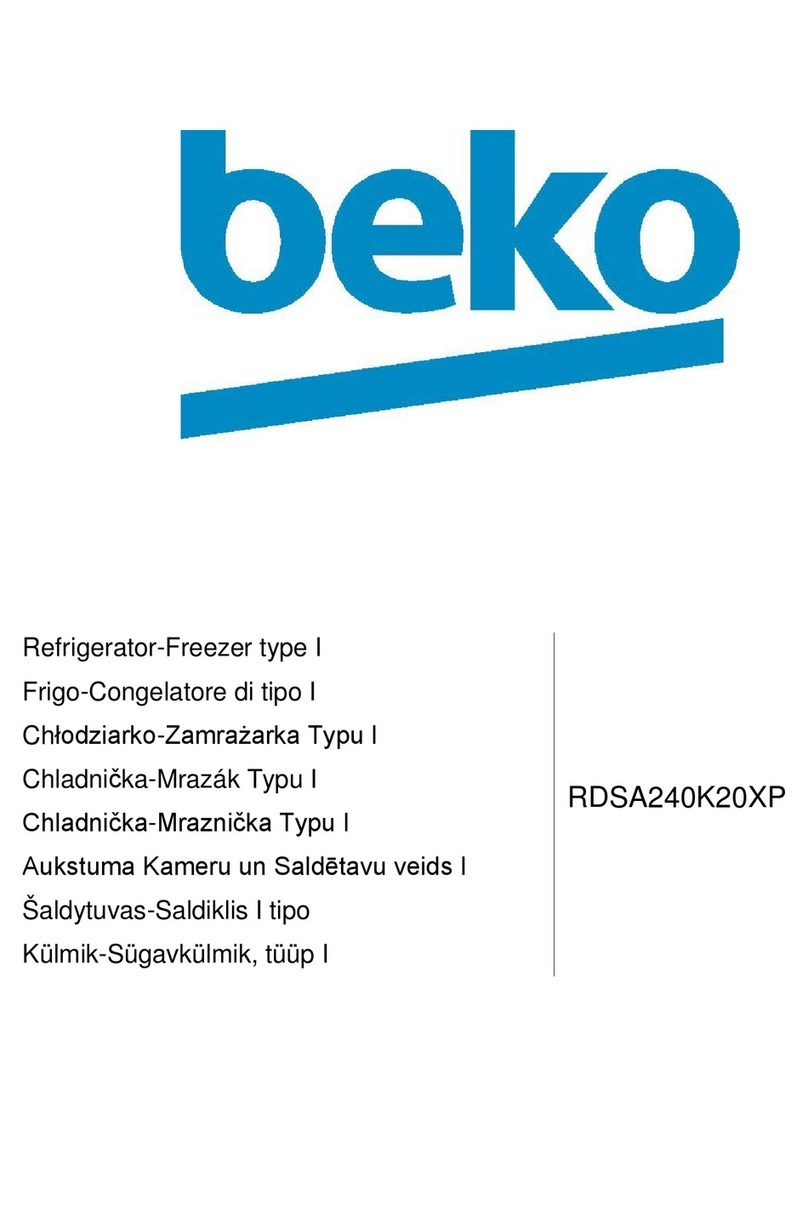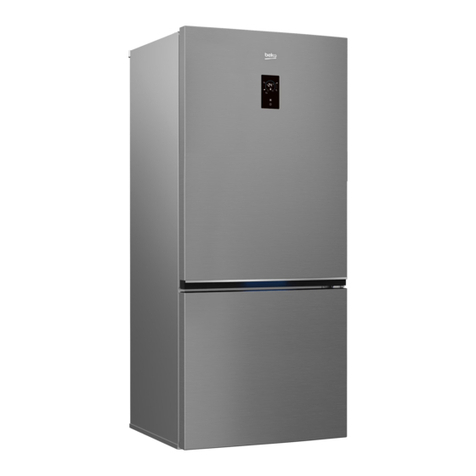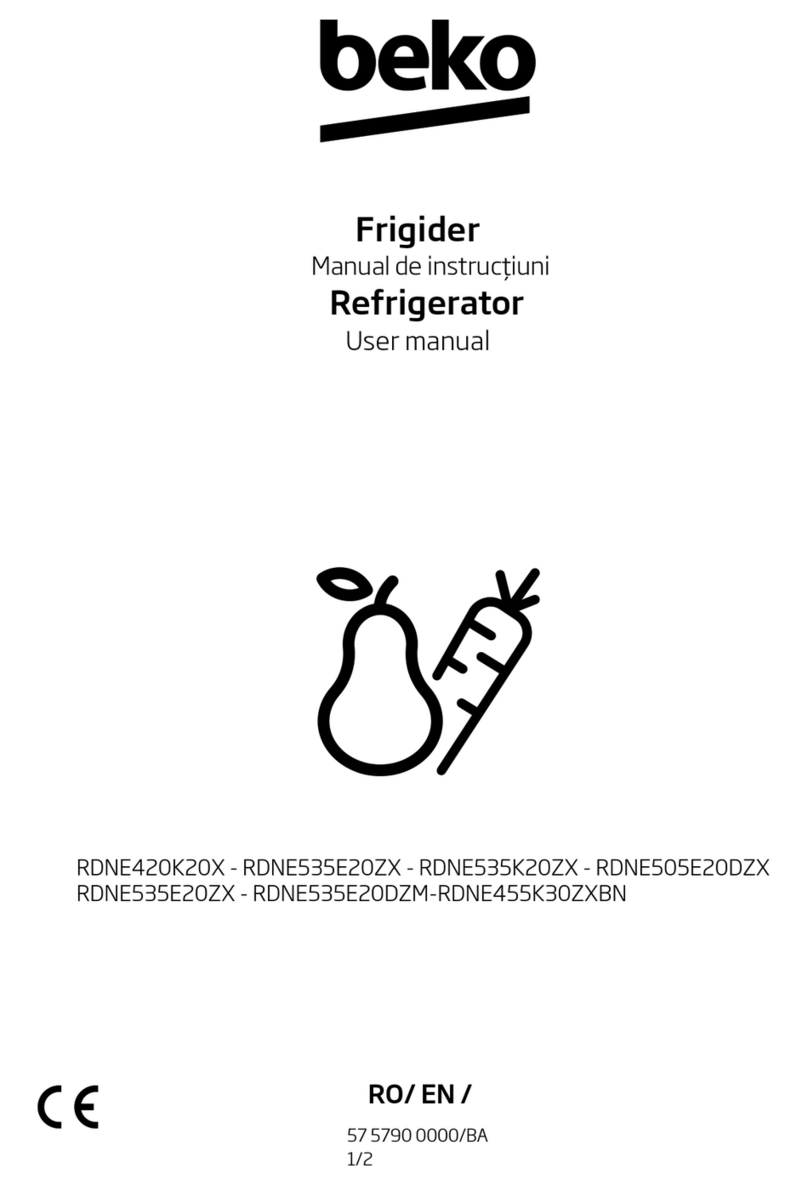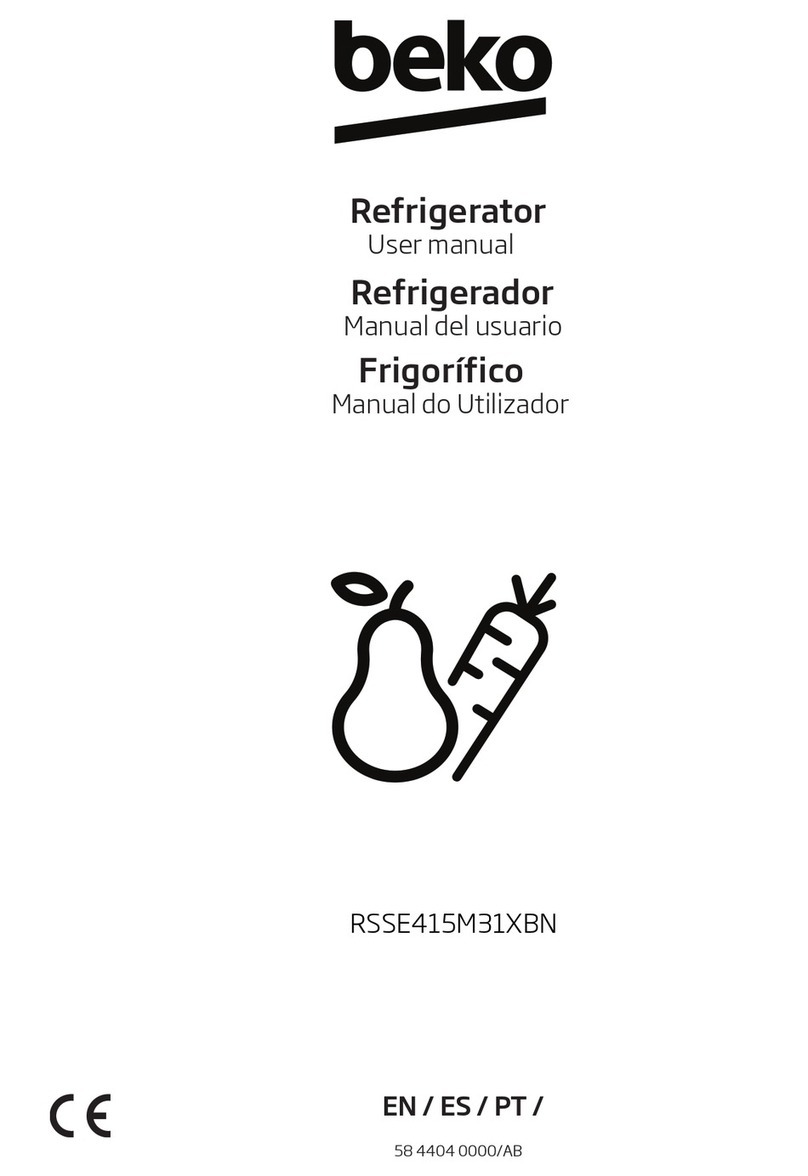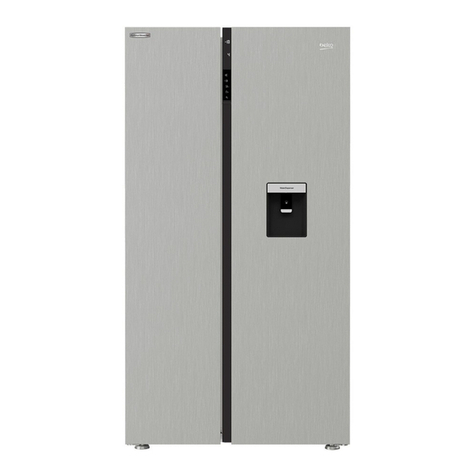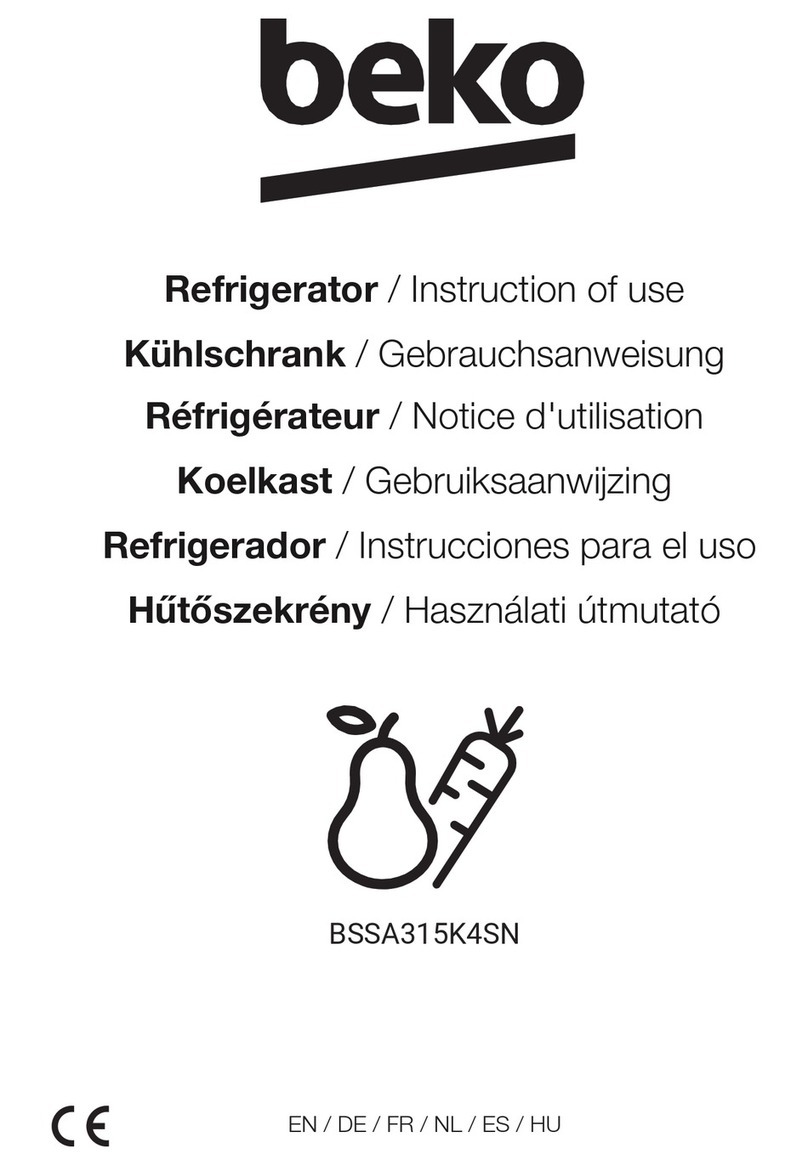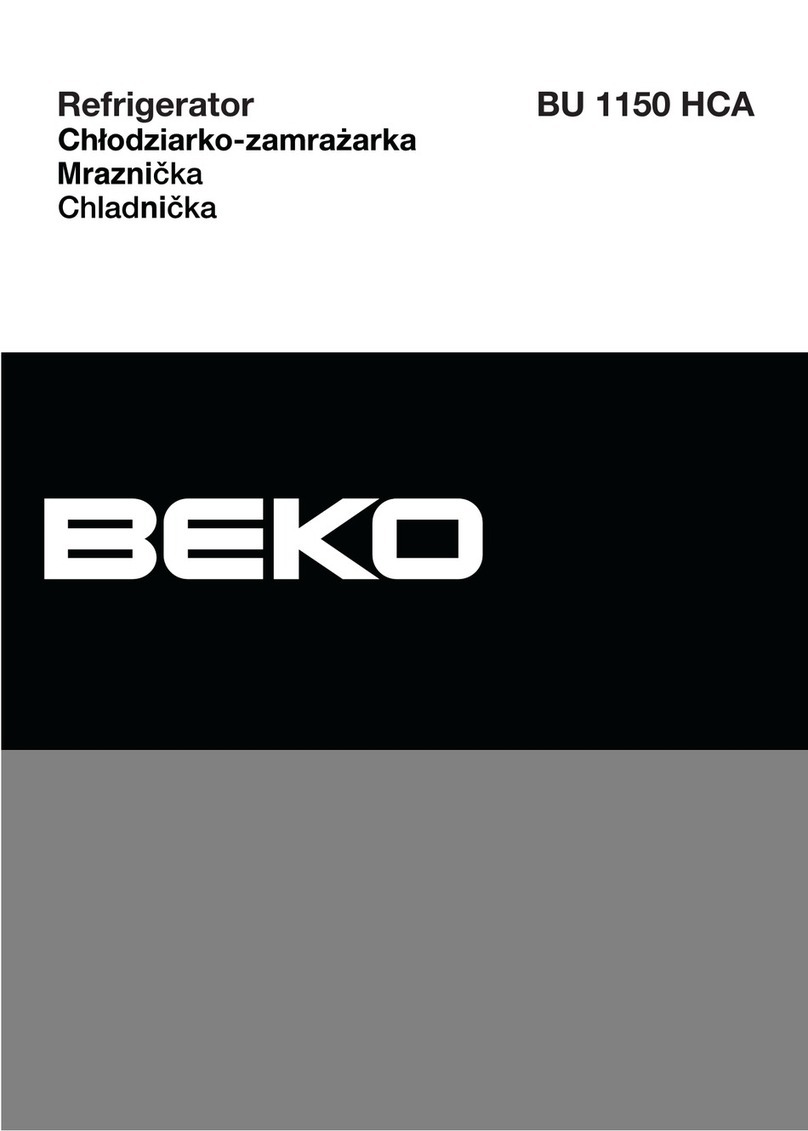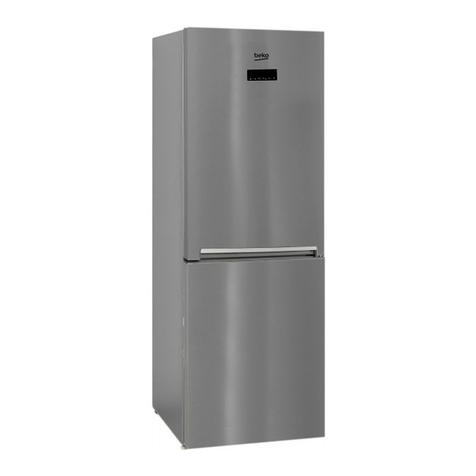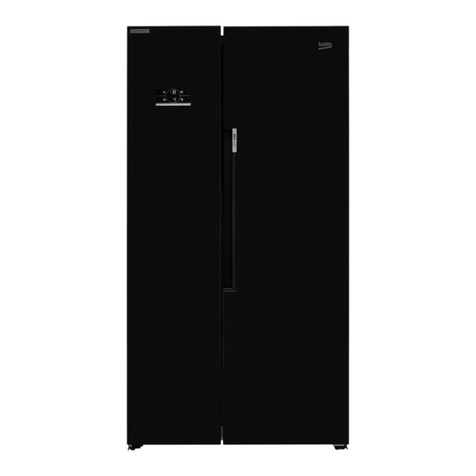2 Warnings
Please examine the following
information. In case these are not
followed, personal injury or material
damage may occur. Then all warranty
and reliability commitments will
become invalid.
The usage life of the unit you
purchased is 10 years. This is the
period for keeping the spare parts
required for the unit to operate as
described.
General security
• It is advised to contact with
authorised service regarding learning
the information and information
places while upon requesting for
disposing of/discarding the product.
• Consult the authorized service for
all kinds of questions and problems
about your unit. Do not intervene or
let others intervene the refrigerator
without the knowledge of authorized
services.
• Do not use steam or steamed
cleaning material for the cleaning and
defrosting processes of your unit
under any circumstances. In such a
case, steam may contact the areas
containing electric current in your
refrigerator and cause short circuit or
electric shock.
• Never use the parts like doors as a
means of support or step.
• Do not use electrical appliances
inside your refrigerator.
• Do not harm the cooling circuit by
using cutters or drillers in the parts
where the coolant circulation takes
place. In case the gas channels, pipe
extensions or surface coatings are
perforated, the spouting coolant may
cause skin irritations and eye injuries.
• Do not cover and block the
ventilation holes of your unit.
• Repairs of the electrical appliances
must only be made by qualified
persons. Unconscious repairs may
create danger for the user.
• In case of any faults or when
maintaining and cleaning, disconnect
the refrigerator from the power
supply by switching off the fuse or
pulling off the plug.
• Do not pull by the cable when pulling
off the plug.
• Place the beverages with high alcohol
rate tightly closed and vertically.
• Do not put flammable materials and
materials containing flammable gas
(eg. spray) and explosive items in
your refrigerator.
• Do not use mechanical tools or other
equipment other than recommended
by the producer in order to
accelerate defrosting.
• This unit you have purchased is
especially environment-friendly.
• This appliance is not intended for use
by persons (including children) with
reduced physical, sensory or mental
